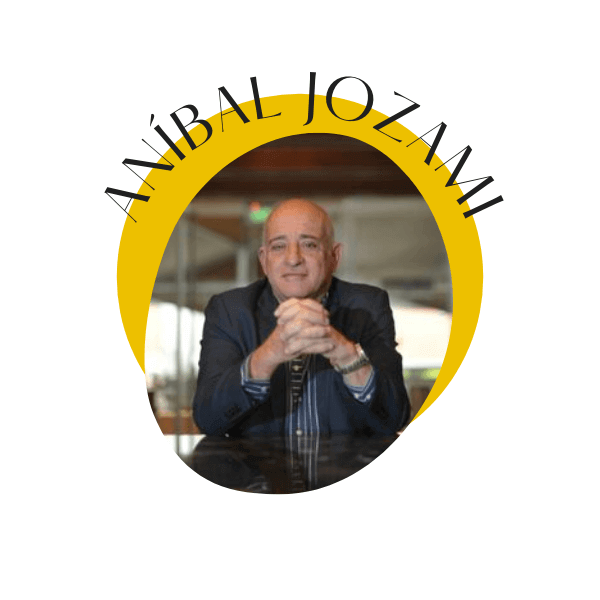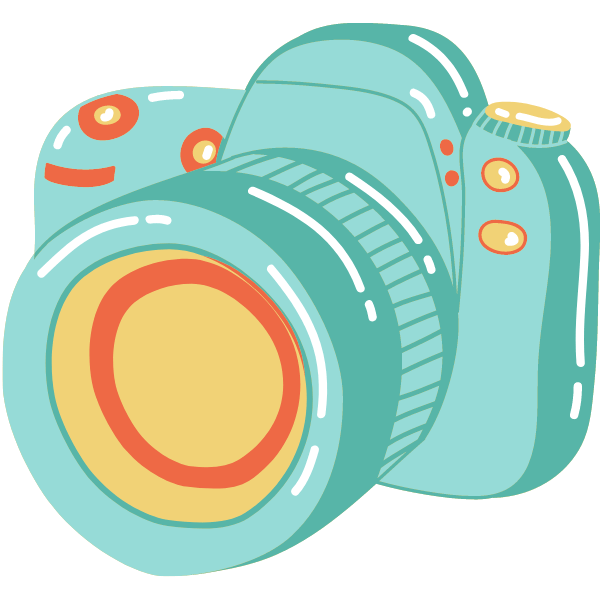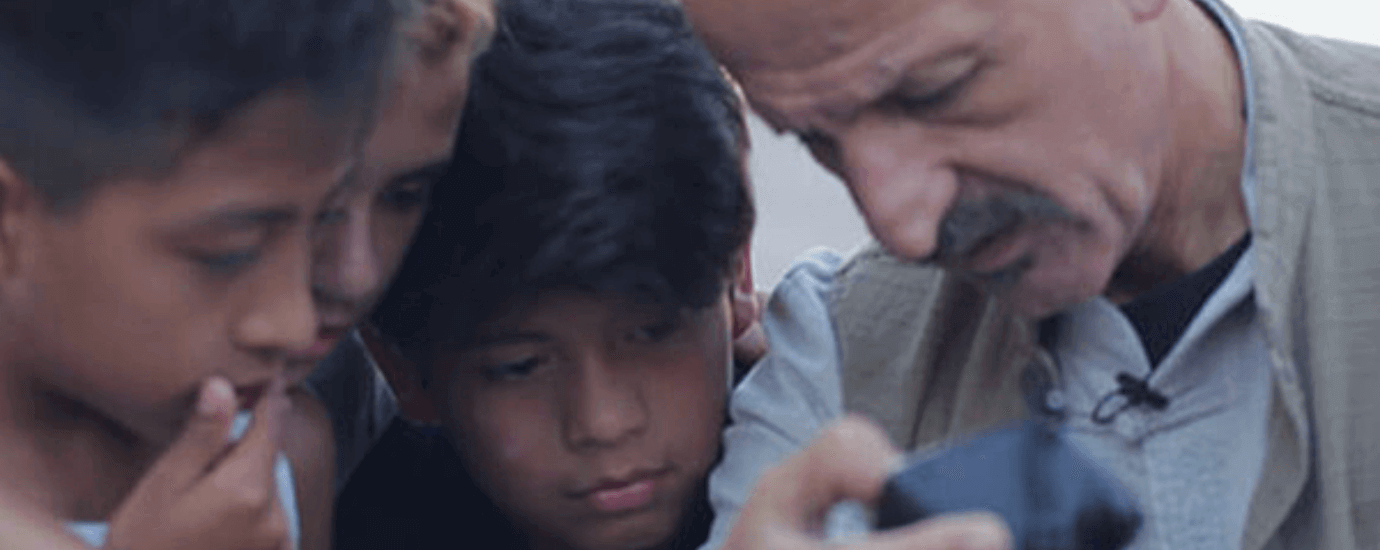WHEN YOU GET A JOB, YOU’LL PAY Me
Aníbal Jozami is a man of challenges.
This cheerful Lebanese-born Argentinean, who gently approaches 70 years old, has traveled the South American continent for nearly two years to create a project that seemed completely crazy: to put on the first Biennale of Contemporary Art in South America.

Passionate collector, he is attacked by the virus of Art while he is still a student.
When he wanders through the streets of San Isidoro, a small village in the northern province of Buenos Aires, he stops every day in front of Raquel Silbenam's discreet workshop’s façade.
Without a penny, he is nevertheless invited by the owner of the place to serve himself, "Take what you want, when you get a job, you’ll pay me."
Young Jozami left with two photos under his arm, one by Jorge Ludueña and the other by Raúl Schurjin.
"It was the beginning of vice, I buy, I buy, but I never sell, I have a love relationship with artworks, I cannot get rid of it. Art is like a drug, with the difference that it does not harm health. It hurts your wallet, but it's good for your children later."
Forty years later, Aníbal Jozami, who still possesses these two photographs, is at the head of a Pharaonic collection, but above all, one of the most complete and eclectic collections in Argentina and even in South America.
Jozami is made of a unique wood, which flourishes the authenticity; he always buys what he likes, not what is fashionable.
"What interests me the most is finding pleasure in work. Each of my purchases is the expression of a moment of my life, of what I was living, who I was with or why I loved her."
This former professor of sociology, a businessman, a Francophile politician, evokes perpetually the art with such a passion pegged to the body that it is impossible not to want to follow it.
Marlise Ilhesca, a journalist and curator, has always stressed the social role of Art, witnessing the milestones of the history of our civilization.
"We have been buyers against the movement. Our purpose, as collectors, is to preserve for the future what the society, in a moment, did not know how to appreciate. "
When he wanders through the streets of San Isidoro, a small village in the northern province of Buenos Aires, he stops every day in front of Raquel Silbenam's discreet workshop’s façade.
Without a penny, he is nevertheless invited by the owner of the place to serve himself, "Take what you want, when you get a job, you’ll pay me."
Young Jozami left with two photos under his arm, one by Jorge Ludueña and the other by Raúl Schurjin.
"It was the beginning of vice, I buy, I buy, but I never sell, I have a love relationship with artworks, I cannot get rid of it. Art is like a drug, with the difference that it does not harm health. It hurts your wallet, but it's good for your children later."
Forty years later, Aníbal Jozami, who still possesses these two photographs, is at the head of a Pharaonic collection, but above all, one of the most complete and eclectic collections in Argentina and even in South America.
Jozami is made of a unique wood, which flourishes the authenticity; he always buys what he likes, not what is fashionable.
"What interests me the most is finding pleasure in work. Each of my purchases is the expression of a moment of my life, of what I was living, who I was with or why I loved her."
This former professor of sociology, a businessman, a Francophile politician, evokes perpetually the art with such a passion pegged to the body that it is impossible not to want to follow it.
Marlise Ilhesca, a journalist and curator, has always stressed the social role of Art, witnessing the milestones of the history of our civilization.
"We have been buyers against the movement. Our purpose, as collectors, is to preserve for the future what the society, in a moment, did not know how to appreciate. "
Bienalsur is an act of indiscipline
Desolated by a relentless statement, Aníbal Jozami evokes a South American Art complexed by the cultural ease of other poles of the globe.
"South American countries are still focusing more on the United States and Europe than on their neighbors," he regrets.
Rarely highlighted at international events, it is true that South American Art has a very limited visibility.
If some initiatives flourish here and there, such as the Museo de Arte Contemporaneo in Mar del Plata or the emergence of contemporary Argentinian or Bolivian artists, the AmSud, inspired by Jozami, has just invented an artistic future with the opening of the ambitious Bienalsur.
The result of more than two years of work, where the collector, seconded by his wife and art historian Diana Wechsler, will have pulled out all the stops to convince universities, communities and private sponsors to follow him in this crazy project .
An initiative that is reminiscent of the Samdani couple in Bangladesh, organizers of the Dhaka Art Summit.
"South American countries are still focusing more on the United States and Europe than on their neighbors," he regrets.
Rarely highlighted at international events, it is true that South American Art has a very limited visibility.
If some initiatives flourish here and there, such as the Museo de Arte Contemporaneo in Mar del Plata or the emergence of contemporary Argentinian or Bolivian artists, the AmSud, inspired by Jozami, has just invented an artistic future with the opening of the ambitious Bienalsur.
The result of more than two years of work, where the collector, seconded by his wife and art historian Diana Wechsler, will have pulled out all the stops to convince universities, communities and private sponsors to follow him in this crazy project .
An initiative that is reminiscent of the Samdani couple in Bangladesh, organizers of the Dhaka Art Summit.

But how can we talk about fine arts in countries that are eaten away by political and economically anemic crises?
"It was difficult to mobilize people in Brazil, a country that, in one year, had three ministers of culture," recalls Marlise Jozami-Ilhesca.
"At each meeting, there was a change in the interlocutor and no one could reach to commit".
After finding the organization which could take over the organization of Bienalsur, in this case the Universidad Nacional de Tres de Febrero (UNTREF) directed by ... Jozami since 1997, it was necessary to find the artistic content of this polymorphic exposure.
"We have gathered a group of curators and artists from different countries, held private meetings with them and discussed how this new biennial should be conceived in contemporary art. They spent five months uninterrupted thinking about the look of samples. After having opened the call to the artists of all nationalities and residences, we proposed to them to create without any restriction. This biennale was a destiny and an act of indiscipline compared to the criteria of the other biennales.”
"It was difficult to mobilize people in Brazil, a country that, in one year, had three ministers of culture," recalls Marlise Jozami-Ilhesca.
"At each meeting, there was a change in the interlocutor and no one could reach to commit".
After finding the organization which could take over the organization of Bienalsur, in this case the Universidad Nacional de Tres de Febrero (UNTREF) directed by ... Jozami since 1997, it was necessary to find the artistic content of this polymorphic exposure.
"We have gathered a group of curators and artists from different countries, held private meetings with them and discussed how this new biennial should be conceived in contemporary art. They spent five months uninterrupted thinking about the look of samples. After having opened the call to the artists of all nationalities and residences, we proposed to them to create without any restriction. This biennale was a destiny and an act of indiscipline compared to the criteria of the other biennales.”

With a collaborative but low budget, about 1.6M €, the trio of enthusiasts raised mountains.
From Buenos Aires, they brought works from Reina Sofia of Madrid, MAMCO of Geneva and many artists like Boltanski or Markul followed the movement.
The other masterpiece of Jozami's team is to have succeeded in making it a global cultural event connected between the South American territories but not only.
In addition to a main site in Buenos Aires, the Bienalsur network will spread throughout Argentina.
It will split the entire Latin American continent from Montevideo to Asunción, via Valparaíso, São Paulo, Lima, Guayaquil, Bogota, México and even Havana.
"The objective of the South American International Contemporary Art Biennale is to establish a real presence of South America on the world's artistic arena."
If Bienalsur's point of view focuses on South America, the territory extends well beyond, crossing the Atlantic and the Pacific.
In Africa, the biennial will make a detour through Ouidah in Benin, in Europe by Madrid, Palma de Mallorca, Paris, Marseille, Berlin and even through Tokyo in Japan.
To connect the participating cities to each other, the organizers have equipped each of the sites with a computer connected by Skype to the other exhibition sites of Bienalsur.
In two clicks, we go from a performance in Rio de Janeiro to an exhibition in Santiago de Chile or Rosario.
Obviously everything is not perfect, the connectivity sometimes crashes, the projection is not optimal and the artistic proposal although dense is sometimes poor.
But the stake of Bienalsur is not only cultural; it is also political and social.
From Buenos Aires, they brought works from Reina Sofia of Madrid, MAMCO of Geneva and many artists like Boltanski or Markul followed the movement.
The other masterpiece of Jozami's team is to have succeeded in making it a global cultural event connected between the South American territories but not only.
In addition to a main site in Buenos Aires, the Bienalsur network will spread throughout Argentina.
It will split the entire Latin American continent from Montevideo to Asunción, via Valparaíso, São Paulo, Lima, Guayaquil, Bogota, México and even Havana.
"The objective of the South American International Contemporary Art Biennale is to establish a real presence of South America on the world's artistic arena."
If Bienalsur's point of view focuses on South America, the territory extends well beyond, crossing the Atlantic and the Pacific.
In Africa, the biennial will make a detour through Ouidah in Benin, in Europe by Madrid, Palma de Mallorca, Paris, Marseille, Berlin and even through Tokyo in Japan.
To connect the participating cities to each other, the organizers have equipped each of the sites with a computer connected by Skype to the other exhibition sites of Bienalsur.
In two clicks, we go from a performance in Rio de Janeiro to an exhibition in Santiago de Chile or Rosario.
Obviously everything is not perfect, the connectivity sometimes crashes, the projection is not optimal and the artistic proposal although dense is sometimes poor.
But the stake of Bienalsur is not only cultural; it is also political and social.
Beauty in the midst of misery
In the east of the capital, only one street, Avenue General Paz, separates Buenos Aires from Ciudadela.
Yet it is much more than a simple urban artery that distinguishes Paris of Latin America from this city of more than 70,000 inhabitants.
"Warning, you are approaching a dangerous area" says the female automated voice on the GPS of the few vehicles that dare to come into this area.
Blocks of dilapidated buildings, old carcasses of abandoned cars, grid walkways, grocery stores and bars caged in aged concrete, barred windows.
The inhabitants have become used to barricading themselves to avoid the confusion and especially the bullets of the narcos whistling daily.
Here is the setting of the mythical barrio of Fort Apache, the most dangerous neighborhood in Argentina.
Erected in the 1970s, abandoned by the state and feared by the media, this disinherited place populated by 40,000 souls has not been forgotten by Bienalsur, quite the contrary.
Yet it is much more than a simple urban artery that distinguishes Paris of Latin America from this city of more than 70,000 inhabitants.
"Warning, you are approaching a dangerous area" says the female automated voice on the GPS of the few vehicles that dare to come into this area.
Blocks of dilapidated buildings, old carcasses of abandoned cars, grid walkways, grocery stores and bars caged in aged concrete, barred windows.
The inhabitants have become used to barricading themselves to avoid the confusion and especially the bullets of the narcos whistling daily.
Here is the setting of the mythical barrio of Fort Apache, the most dangerous neighborhood in Argentina.
Erected in the 1970s, abandoned by the state and feared by the media, this disinherited place populated by 40,000 souls has not been forgotten by Bienalsur, quite the contrary.
Invited by Aníbal Jozami, the famous Iranian photographer Reza Deghati did not just come to expose his shots in Buenos Aires.
Thanks to Bienalsur, he set out his objectives to animate for three months a workshop in Fuerte Apache and Villa 21-24, a neighboring district just as plunged in misery.
At 65, Deghati is a man who has seen everything, a world surveyor.
From the jails of the Shah to political exile in his youth in Iran to war and famine in Afghanistan, Rwanda, Iraq and Somalia, he devoted his life to photographing human horror for National Geographic, Time Magazine or Paris Match. Yet, by his own admission, even in the Middle East or the Balkans in turbulent times, no GPS ever put him on alert.
For the photographer, the deal is simple and he hammers it unceasingly: "In every misfortune hides a great happiness".
Thanks to Bienalsur, he set out his objectives to animate for three months a workshop in Fuerte Apache and Villa 21-24, a neighboring district just as plunged in misery.
At 65, Deghati is a man who has seen everything, a world surveyor.
From the jails of the Shah to political exile in his youth in Iran to war and famine in Afghanistan, Rwanda, Iraq and Somalia, he devoted his life to photographing human horror for National Geographic, Time Magazine or Paris Match. Yet, by his own admission, even in the Middle East or the Balkans in turbulent times, no GPS ever put him on alert.
For the photographer, the deal is simple and he hammers it unceasingly: "In every misfortune hides a great happiness".

Then Reza set up his workshop in the Franciscan chapel of Santa Clara, but nothing was earned.
"The people of Fuerte Apache were dubious, and they were made so many promises not kept in the past," said Matias, 29, a courageous social worker trained in photography, who played a coordinating role in the operation.
He has beaten the streets in the neighborhood of a certain Carlos Tévez, the highest-paid footballer on the planet, to find about thirty pupils between the ages of 11 and 18, most of whom out of school and fallen in small delinquency. "They were trusted. Everyone received a semi-reflex for which he was responsible."
The goal? To capture their environment and offer their view on the world of photography.
"Now we see everything just like a possible photo," says 18-year-old Natalia.
The most gifted of them have proved to be true artists. Amparo Rojas Aguilera, 16, is like all the teenagers of the corner, she grew too fast, but her photos ostensibly turn their backs to the usual clichés showing violence and destruction.
"We are watching and seeing the horror of this place, but for them, it is paradise. I want people to tell strangers," Reza said.
"They will show the beauty of this place, and the children will enter the city with their photographs, and we will put them everywhere. The inhabitants of Buenos Aires will see that they are not dangerous; they are intelligent and sensitive children who were abandoned here. And you will understand that it cannot continue like this, Argentina cannot treat its children like that, I am optimistic, we are on the right track and photography can be of great help”.
The exhibition of his protégés was inaugurated on September 17, 2017 in the middle of the Plaza San Martin, an emblematic place of the capital albiceleste, which represents almost what are Bastille and Republic for Paris.
Here more than elsewhere, Art has become a real facilitator of life.
Bienalsur is valuable in many ways.
Because, in addition to revealing cultures that are sometimes forgotten, often ignored, but never extinct, the event has planted small seeds, here and there, on lands ordinary unfertile.
The South American Biennial will be held until December 2017, but there is no doubt that it will continue for a long time in the collective memory of all those whom it has irradiated, from Tokyo to Fuerte Apache, from Aníbal Jozami to Amparo Rojas Aguilera.
















